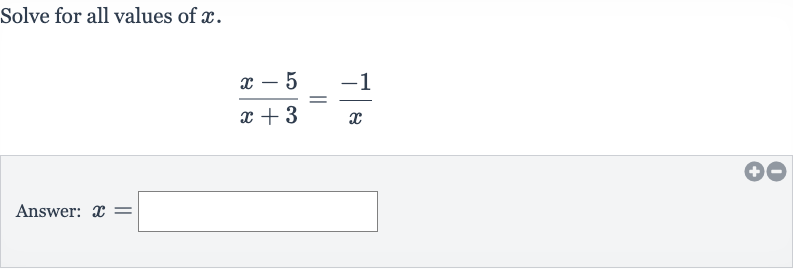AI tutor
Full solution
Q. Solve for all values of .Answer:
- Identify Equation: First, we need to identify the equation we are solving: . We will solve for by finding a common denominator and then cross-multiplying to eliminate the fractions.
- Find Common Denominator: The common denominator between and is . We will multiply both sides of the equation by this common denominator to clear the fractions.
- Clear Fractions: Multiplying both sides of the equation by , we get:This simplifies to:
- Distribute and Simplify: Now we distribute on both sides of the equation:
- Combine Like Terms: Next, we bring all terms to one side of the equation to set it equal to zero:
- Factor Quadratic Equation: Combine like terms:
- Solve for x: Now we factor the quadratic equation:
- Check Solutions: Set each factor equal to zero and solve for : or
- Check Solutions: Set each factor equal to zero and solve for : or Solving each equation gives us the values of : or
- Check Solutions: Set each factor equal to zero and solve for : or Solving each equation gives us the values of : or However, we must check these solutions against the original equation to ensure they do not make any denominator zero. The original equation has denominators and , so we must exclude any solutions where or .
- Check Solutions: Set each factor equal to zero and solve for : or Solving each equation gives us the values of : or However, we must check these solutions against the original equation to ensure they do not make any denominator zero. The original equation has denominators and , so we must exclude any solutions where or .Checking the solutions, we see that neither nor makes any denominator zero, so both are valid solutions.

